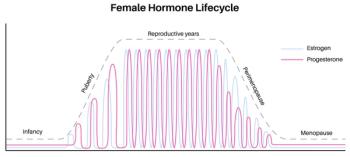
No Malignant Risk Seen in Blood from Donors With Subclinical Cancer
STOCKHOLM -- Blood transfusions from donors with an undetected cancer do not increase the recipients' risk of developing a malignancy, researchers here reported.
STOCKHOLM, May 18 -- Blood transfusions from donors with an undetected cancer do not increase the recipients' risk of developing a malignancy, found researchers here.
In an observational study of more than 350,000 persons in Sweden and Denmark, the risk of a whole blood recipient developing cancer from a donor with an occult or subclinical malignancy was no different than it was from getting blood from an unaffected donor, Olof Nyrn, M.D., of the Karolinksa Institute, and colleagues, reported in the May 19 issue of The Lancet.
Donors defined as precancerous were those diagnosed with an incident malignancy (International Classification of Disease, excluding non-melanoma skin cancer) within five years of blood donation, said Dr. Nyrn and colleagues.
"Naturally, we cannot be certain that malignant or premalignant cells were present in the donor's blood at the time of the index blood donation," they wrote, "but evidence suggests that the process leading to cancer is indeed lengthy and that circulating tumor cells exist at an early stage."
Using merged data from all computerized blood bank registers in Sweden and Denmark, from 1968 to 2002, the researchers identified 1.13 million donors and 1.31 transfusion recipients.
Demographic and medical data, including mortality and cancer occurrences, were ascertained through linkages with nationwide and essentially complete population and health-care registers. The recipients were followed for as long as 34 years, the researchers said.
The risk of cancer in exposed recipients, compared with that of recipients who received blood from non-cancerous donors, was estimated with multivariate Poisson regression, adjusting for potential confounding factors.
Of 354,094 transfusion recipients eligible for the analysis, 12,012 (3%) were exposed to blood products from precancerous donors.
All recipients received at least one unit of whole blood.
The researchers reported finding no excess risk of cancer overall (adjusted relative risk 1.00, 95% CI 0.94-1.07) or in crude anatomical subsites among recipients of blood from precancerous donors compared with recipients of blood from non-cancerous donors.
Also, they said, there was little variation in site-specific cancer risk between exposed and unexposed recipients. They detected no excess risk when the sites regarded to be at highest risk (lung, liver, skeleton, and central nervous system) were combined (adjusted relative risk 1.0, 95% CI 0.85-1.17).
Even in situations where the likelihood of transmission of cancer would presumably be the highest -- shorter time to diagnosis of cancer in the donors, and diagnosis of different types of cancer among the donors, for example -- sensitivity analysis still found no evidence to suggest that the risk was any different between precancerous and non-cancer donors, the investigators said.
Some of the suggested mechanisms for the development of cancer from a blood transfusion would be immune modulation, transmission of factors causally related to cancer development, and engraftment of malignant cells from the donor, the researchers wrote.
Although these findings should not be overinterpreted, Dr. Nyrn and colleagues said, the overall consistency of the negative results does not support the hypothesis that allogenic transfer of single malignant cells can lead to engraftment and subsequent development of clinical malignancies in transfusion recipients.
Discussing the five-year cutoff for the donor as a possible study limitation, the researchers noted that although five years was somewhat arbitrary and could potentially have masked a true association, they used it to avoid further multiple sensitivity testing problems. Also, they said, they found no suspicious pattern when the five-year exposure window was shortened.
Although the power to confirm an excess long-term risk was limited, a point estimate of relative risk slightly below one for the follow-up period of 20 to 34 years after first transfusion suggests that hidden long-term excess risk were unlikely, though not impossible, they investigators wrote.
In an accompanying commentary, Garth H. Utter, M.D, of the University of California at Davis in Sacramento, noted that because of the chronological limitations of the datasets, there is a possibility that a slightly increased risk of transfusion-transmitted cancer might occur more than 20 years later.
The optimum indications for blood-product transfusion remain an area of active investigation, he said. Although randomized trials of different transfusion thresholds provide necessary information about acute outcomes, they do not offer much hope of defining the consequences of transfusion years to decades later, especially for a relatively rare outcome.
With their analysis of a large and relatively complete dataset, the Karolinska researchers have taken an important stride forward in evaluating one of these potential long-term risks of blood transfusion, Dr. Utter concluded.
Newsletter
Enhance your clinical practice with the Patient Care newsletter, offering the latest evidence-based guidelines, diagnostic insights, and treatment strategies for primary care physicians.

























































































































































































































































































